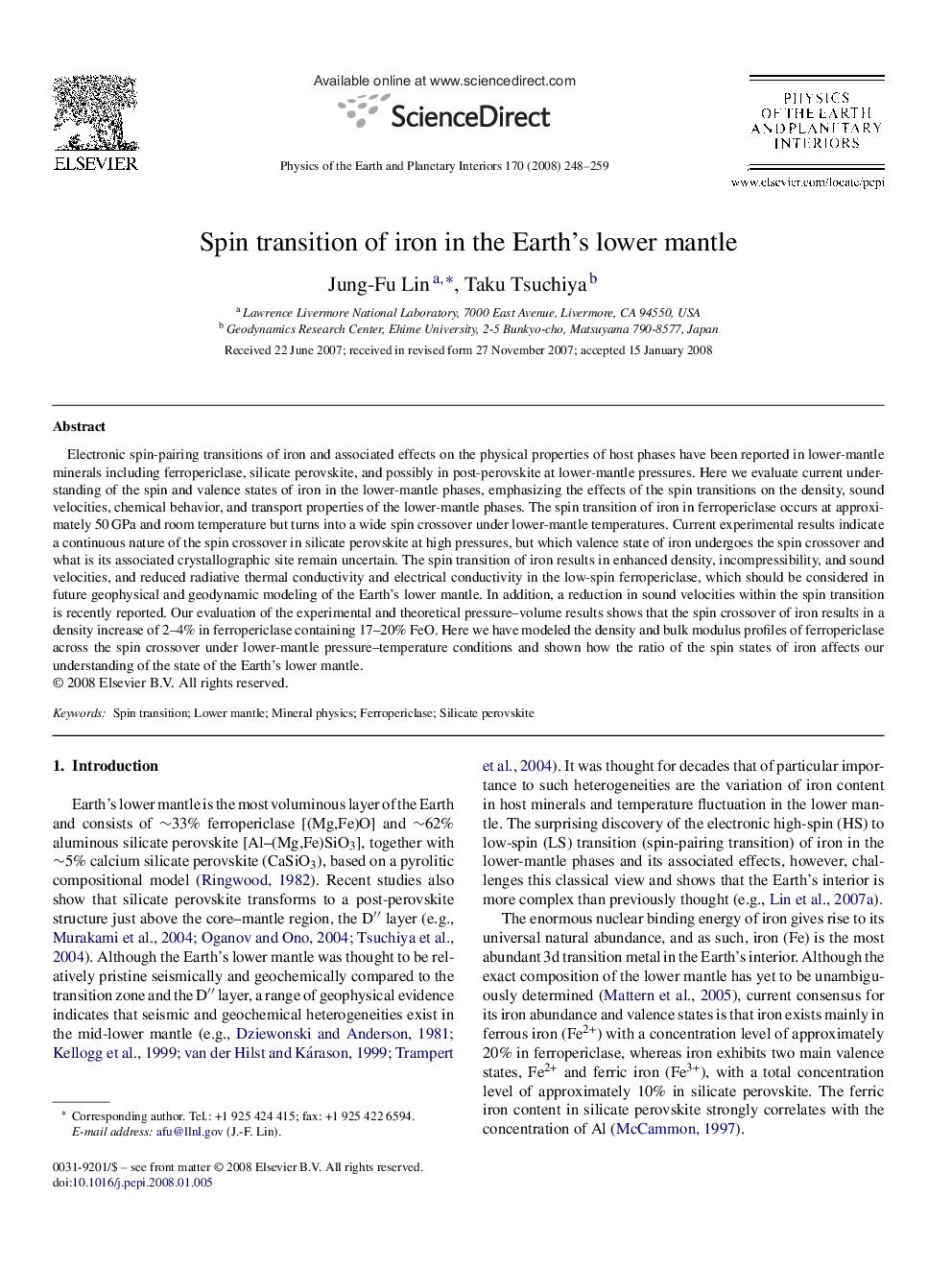| Article ID | Journal | Published Year | Pages | File Type |
|---|---|---|---|---|
| 4742606 | Physics of the Earth and Planetary Interiors | 2008 | 12 Pages |
Electronic spin-pairing transitions of iron and associated effects on the physical properties of host phases have been reported in lower-mantle minerals including ferropericlase, silicate perovskite, and possibly in post-perovskite at lower-mantle pressures. Here we evaluate current understanding of the spin and valence states of iron in the lower-mantle phases, emphasizing the effects of the spin transitions on the density, sound velocities, chemical behavior, and transport properties of the lower-mantle phases. The spin transition of iron in ferropericlase occurs at approximately 50 GPa and room temperature but turns into a wide spin crossover under lower-mantle temperatures. Current experimental results indicate a continuous nature of the spin crossover in silicate perovskite at high pressures, but which valence state of iron undergoes the spin crossover and what is its associated crystallographic site remain uncertain. The spin transition of iron results in enhanced density, incompressibility, and sound velocities, and reduced radiative thermal conductivity and electrical conductivity in the low-spin ferropericlase, which should be considered in future geophysical and geodynamic modeling of the Earth's lower mantle. In addition, a reduction in sound velocities within the spin transition is recently reported. Our evaluation of the experimental and theoretical pressure–volume results shows that the spin crossover of iron results in a density increase of 2–4% in ferropericlase containing 17–20% FeO. Here we have modeled the density and bulk modulus profiles of ferropericlase across the spin crossover under lower-mantle pressure–temperature conditions and shown how the ratio of the spin states of iron affects our understanding of the state of the Earth's lower mantle.
